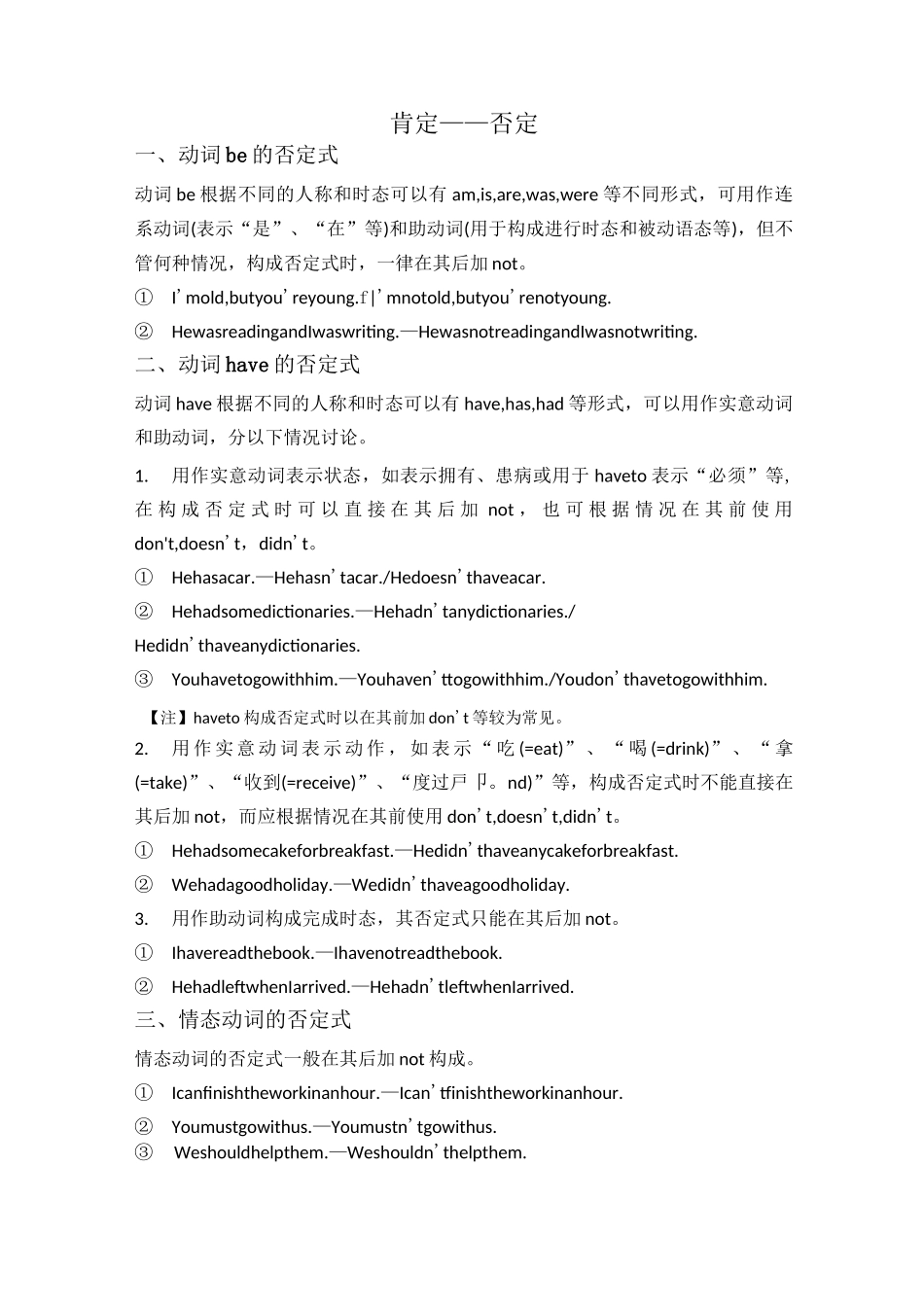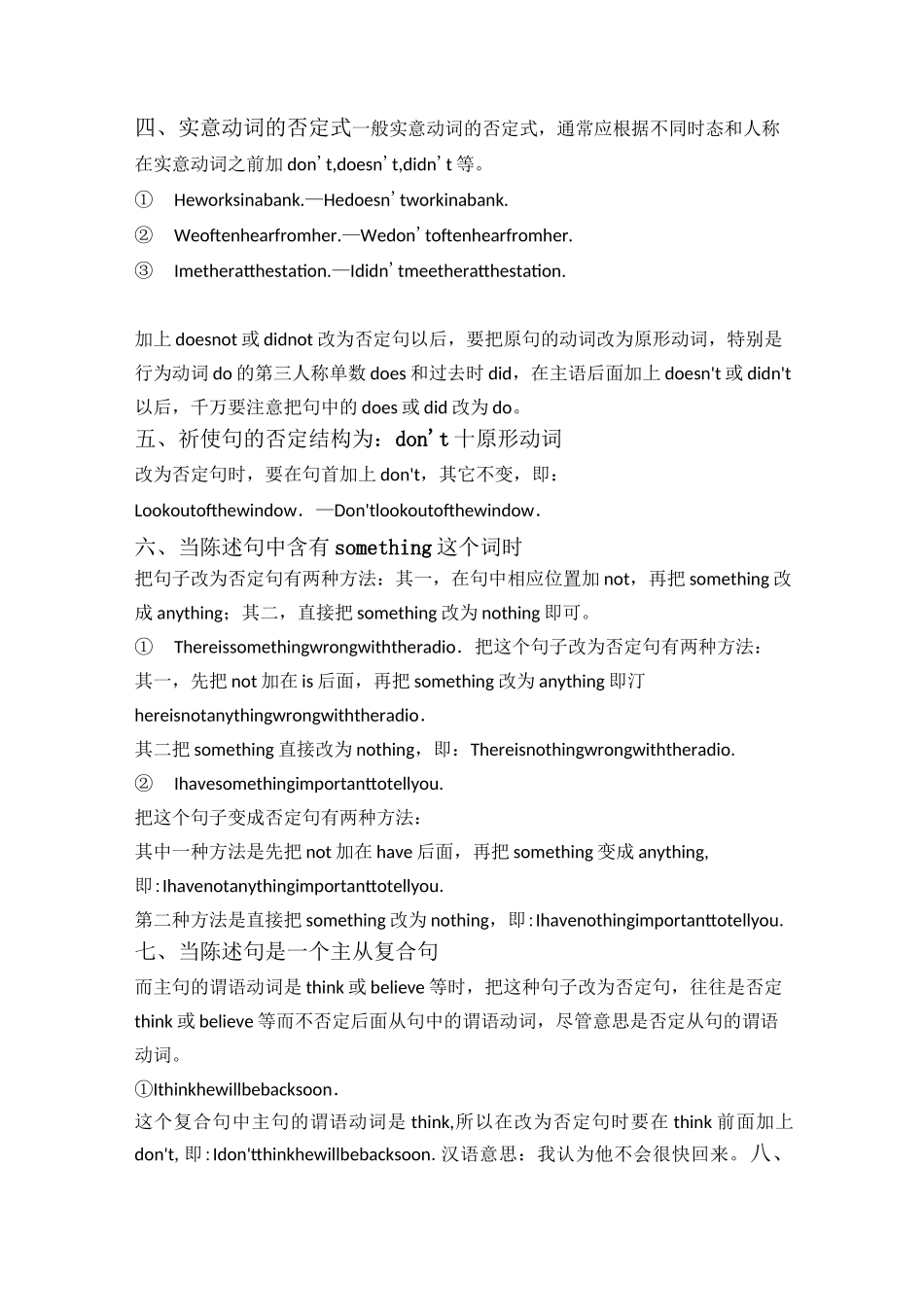肯定——否定一、动词 be 的否定式动词 be 根据不同的人称和时态可以有 am,is,are,was,were 等不同形式,可用作连系动词(表示“是”、“在”等)和助动词(用于构成进行时态和被动语态等),但不管何种情况,构成否定式时,一律在其后加 not。①I'mold,butyou'reyoung.f|'mnotold,butyou'renotyoung.②HewasreadingandIwaswriting.—HewasnotreadingandIwasnotwriting.二、动词 have 的否定式动词 have 根据不同的人称和时态可以有 have,has,had 等形式,可以用作实意动词和助动词,分以下情况讨论。1.用作实意动词表示状态,如表示拥有、患病或用于 haveto 表示“必须”等,在 构 成 否 定 式 时 可 以 直 接 在 其 后 加 not , 也 可 根 据 情 况 在 其 前 使 用don't,doesn't,didn't。①Hehasacar.—Hehasn'tacar./Hedoesn'thaveacar.②Hehadsomedictionaries.—Hehadn'tanydictionaries./Hedidn'thaveanydictionaries.③Youhavetogowithhim.—Youhaven'ttogowithhim./Youdon'thavetogowithhim.【注】haveto 构成否定式时以在其前加 don't 等较为常见。2.用 作 实 意 动 词 表 示 动 作 , 如 表 示 “ 吃 (=eat)” 、 “ 喝 (=drink)” 、 “ 拿(=take)”、“收到(=receive)”、“度过戸卩。nd)”等,构成否定式时不能直接在其后加 not,而应根据情况在其前使用 don't,doesn't,didn't。①Hehadsomecakeforbreakfast.—Hedidn'thaveanycakeforbreakfast.②Wehadagoodholiday.—Wedidn'thaveagoodholiday.3.用作助动词构成完成时态,其否定式只能在其后加 not。①Ihavereadthebook.—Ihavenotreadthebook.②HehadleftwhenIarrived.—Hehadn'tleftwhenIarrived.三、情态动词的否定式情态动词的否定式一般在其后加 not 构成。①Icanfinishtheworkinanhour.—Ican'tfinishtheworkinanhour.②Youmustgowithus.—Youmustn'tgowithus.③Weshouldhelpthem.—Weshouldn'thelpthem.四、实意动词的否定式一般实意动词的否定式,通常应根据不同时态和人称在实意动词之前加 don't,doesn't,didn't 等。①Heworksinabank.—Hedoesn'tworkinabank.②Weoftenhearfromher.—Wedon'toftenhearfromher.③Imetheratthestation.—Ididn'tmeetheratthestation.加上 doesnot 或 didnot 改为否定句以后,要把原句的动词改为原形动词,特别是行为动词 do 的第三人称单数 does 和过去时...


